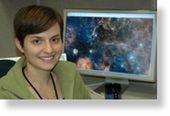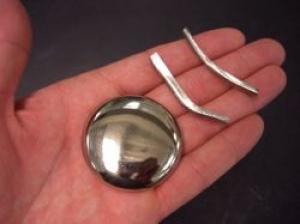
© NASA/Jet Propulsion LaboratoryIs dark energy really real? Is our universe really accelerating? These questions hang around in the mind of Ali Vanderveld, a post-doctoral cosmologist at JPL.
About 10 years ago, scientists reached the astonishing conclusion that our universe is accelerating apart at ever-increasing speeds, stretching space and time itself like melted cheese. The force that's pushing the universe apart is still a mystery, which is precisely why it was dubbed "dark energy."
But is dark energy really real? Is our universe really accelerating? These questions hang around in the mind of Ali Vanderveld, a post-doctoral cosmologist at JPL. Vanderveld and her colleagues recently published a paper in the journal
Physical Review looking at how giant holes in our "Swiss-cheese-like" universe might make space look as if it's accelerating when it's really not. They concluded these holes, or voids, are not sufficient to explain away dark energy; nevertheless, Vanderveld says it's important to continue to question fundamental traits of the very space we live in.
"Sometimes we take dark energy for granted," said Vanderveld. "But there are other theories that could explain why the universe appears to be moving apart at faster and faster speeds."

